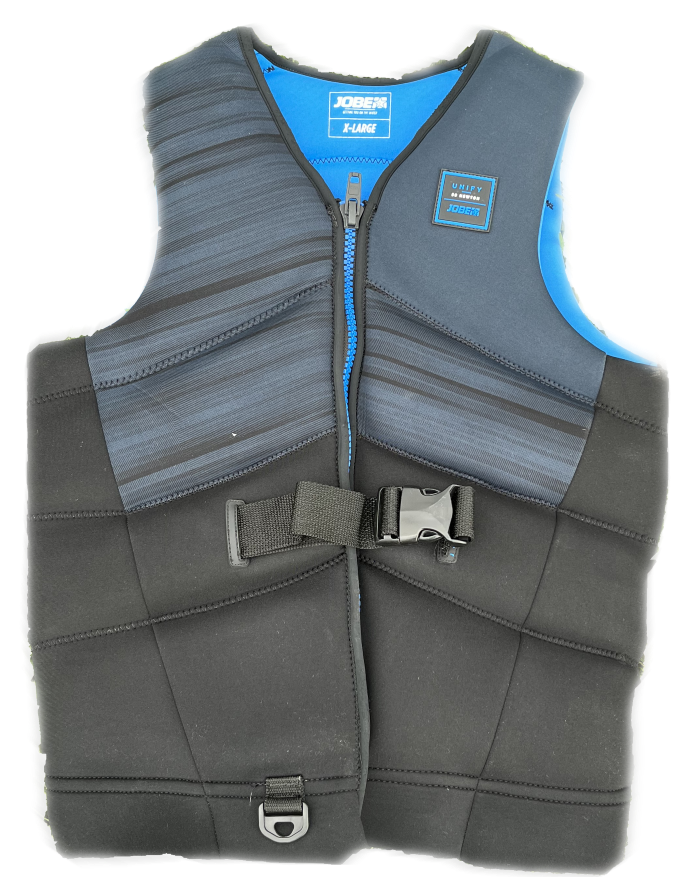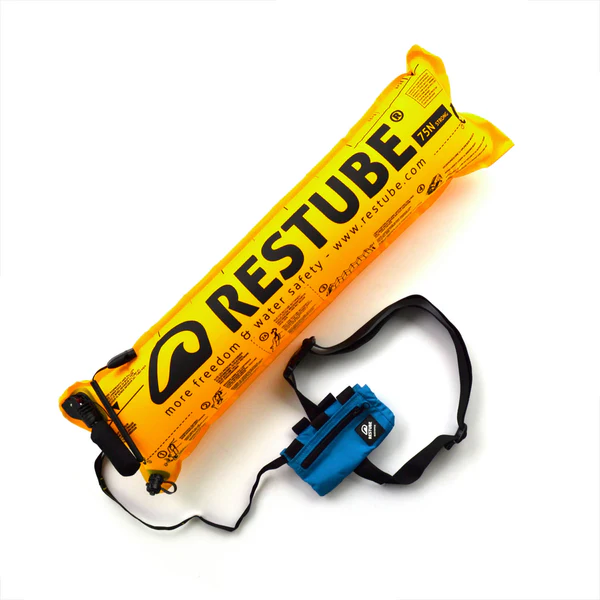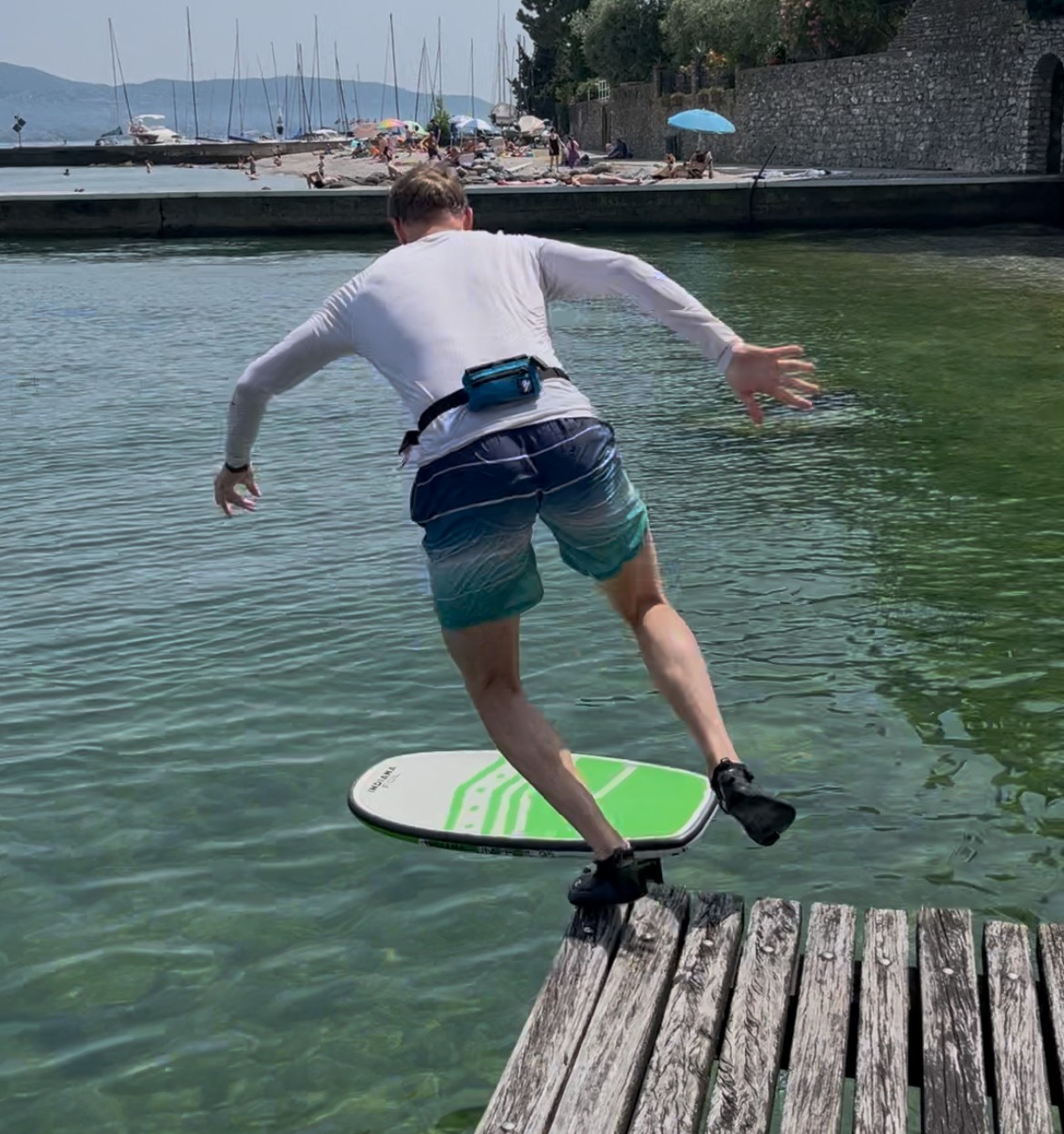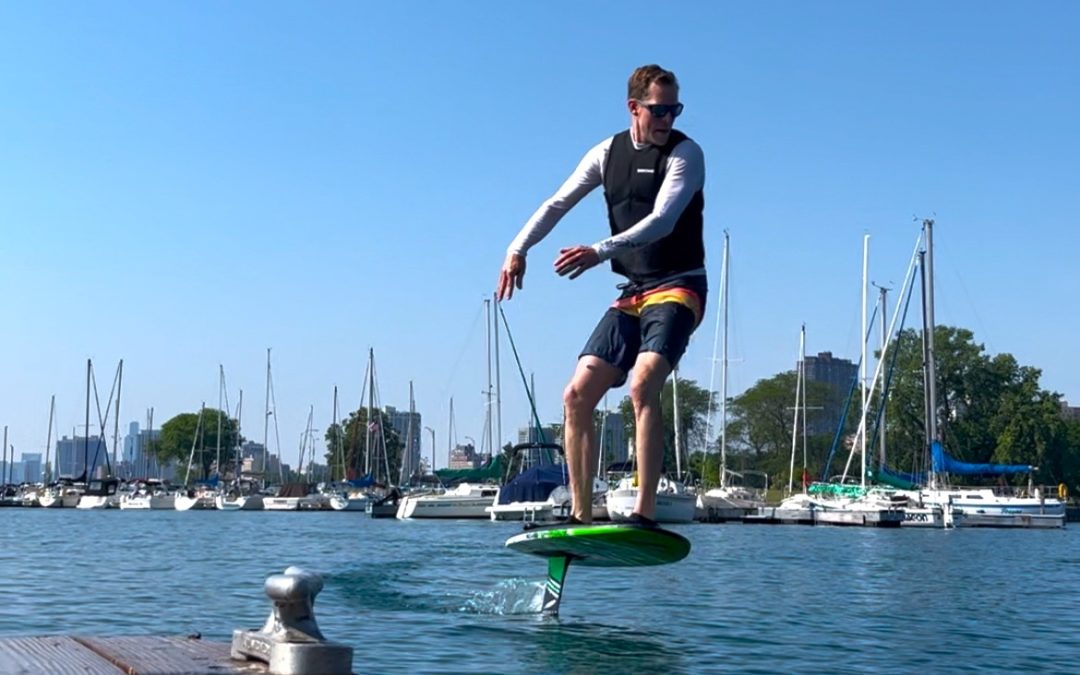People regularly ask whether a life jacket is required when pumpfoiling. Of course, pumpfoiling is a water sport, and there’s always the risk of ending up underwater—meaning there’s also the risk of drowning. So, wearing a life jacket is definitely recommended! – or not? Well, the topic isn’t quite that simple, so we’d like to take a closer look at a few aspects of whether wearing a life jacket when pumpfoiling is actually necessary.
From a safety point of view
A life jacket certainly provides added safety in terms of buoyancy and thereby reduces the risk of sinking. For those who want to be extra safe, a life jacket with a collar is worth considering. In the event of unconsciousness, a collared life jacket offers additional protection. Classic swim and rescue vests, which have buoyant material on the front of the chest to ideally turn the body into a back-facing position, use the collar to keep the head above the waterline.
However, anyone who’s watched pumpfoilers will notice that very few wear a “classic” rescue vest. In fact, many pumpfoilers don’t wear any vest at all.
Beyond the risk of drowning, pumpfoiling presents other dangers. The pumpfoil itself (the board with foil and mast) is made of relatively hard material and features sharp edges in various places. A fall onto the equipment can be painful or even cause injuries.
We’ve explored this topic more thoroughly in our report titled “How dangerous is pumpfoiling?”
Due to these risks, it’s worth considering not only the risk of drowning but also the risk of injury from impact when deciding whether to wear a life jacket. Impact injuries can be mitigated by so-called impact vests. There are various impact vests on the market that also serve as buoyancy aids due to their design. If you pay attention to the buoyancy level when purchasing an impact vest, you can reduce both risks—drowning and injury from impact—with a suitable impact vest. However, it’s important to note that impact vests are generally not “unconscious-safe,” meaning they don’t have a collar and won’t automatically position the wearer on their back. Nevertheless, we believe that an impact vest with adequate buoyancy is a good option for pumpfoilers.

Legal Perspective
The question often arises as to whether wearing a life jacket when pumpfoiling is mandatory or voluntary. In the following, we refer to the legal situation on Swiss inland lakes.
In principle, pumpfoils are classified as competition-capable water sports equipment and are considered vessels (Binnenschifffahrtsverordnung BSV: Art. 2 Buchstabe a Ziff. 1.). Therefore, outside the outer shore zone (300 meters) and on flowing waters (rivers), a rescue device (e.g., a life jacket) with a minimum buoyancy of 50 Newtons must be carried. This requirement also applies to equipment like stand-up paddle boards (SUPs).
In short, as long as the sport is practiced on still water within the outer shore zone—meaning no more than 300 meters from the shore—there is no requirement to wear a life jacket. However, pumpfoilers who enjoy covering longer distances or following the waves of passenger ships and thus leave the outer shore zone must carry a buoyancy aid of at least 50 Newtons.
Alternative to life jackets and impact vests
As already mentioned, an impact vest with sufficient buoyancy is a good alternative. However, for those who prefer not to wear a vest—perhaps because it makes them feel restricted—there are other options.

Source: Restube.com
Very compact and easy to wear around the waist on a belt, for example, are the safety buoys from RESTUBE. These „emergency buoys“ come with 50 and 75 Newtons of buoyancy. In case of an emergency, the buoy is triggered using a pull cord that activates a CO₂ cartridge, causing it to inflate automatically.

The RESTUBE also has an integrated whistle to help draw attention to yourself. Even if you don’t need to activate the RESTUBE – which we certainly hope – you can still use the small compartment on the belt to store a credit card or key, for example, if you’d prefer not to leave them behind on the dock.
Summary
Depending on where the sport is practiced, there are legal considerations that may require wearing or carrying a buoyancy aid. It’s therefore crucial to check whether regulations or laws apply to the body of water or specific zones within it. In addition to a traditional life jacket, impact vests with sufficient buoyancy or emergency buoys—such as those that can be activated in an emergency—are good alternatives. However, these alternatives usually involve a trade-off regarding safety in cases of unconsciousness.
Legal Notice: All information is provided without guarantee. This report was prepared with the utmost care, but no warranty can be given regarding the completeness and accuracy of the referenced legal provisions. Each pumpfoiler is fundamentally responsible for informing themselves about the rules and regulations that apply to the body of water where they practice the sport.

